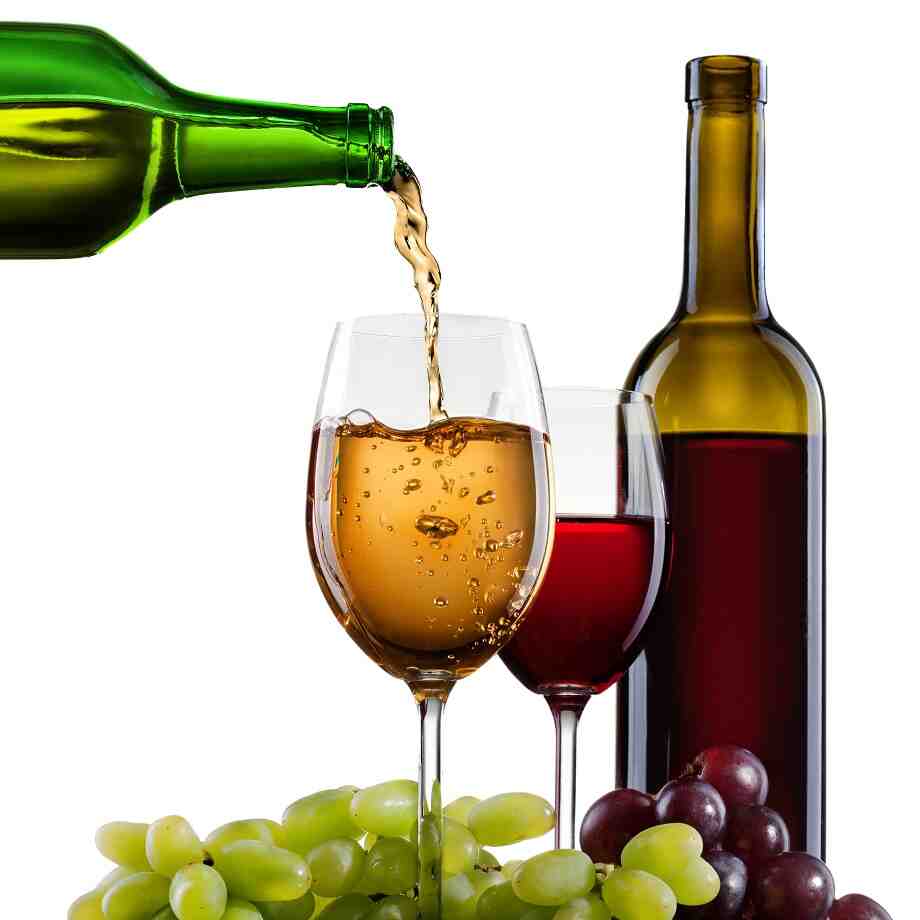Understanding the Difference Between Red, White, and Rosé Wines
Wine is one of the oldest and most beloved beverages in the world. Its history spans thousands of years, and its variety and complexity continue to intrigue enthusiasts and novices alike. When it comes to wine, many people are familiar with the broad categories of red, white, and rosé, but understanding the key differences between them can enhance your wine experience. Whether you are a casual wine drinker or someone who enjoys pairing wines with meals, gaining a deeper appreciation of these distinct types of wine is a fascinating journey. In this article, we’ll explore the differences between red, white, and rosé wines, focusing on how they are made, the key factors that contribute to their characteristics, and how to choose the right wine for any occasion.
The Basics of Wine Production
To begin, it’s important to understand that all wines come from fermented grapes. However, the type of wine produced largely depends on the grape variety, how the grapes are processed, and how long they undergo fermentation. The primary difference between red, white, and rosé wines lies in the way the grapes are handled during the winemaking process, specifically in relation to the skin.
Red Wine
Red wine is produced using dark-colored grape varieties, typically those with thick, dark skins. During the winemaking process, the grapes are crushed and fermented with their skins. The skins contain compounds like anthocyanins, which are responsible for the deep red or purple color of the wine. The process of fermentation with the skins also releases tannins, which contribute to the wine’s structure and mouthfeel, as well as its aging potential.
Red wines are typically known for their rich, robust flavors. They are often more complex than white wines, due to the higher levels of tannins, acids, and phenolic compounds extracted from the grape skins. Red wines can range in flavor from fruity and light to bold and intense, depending on the grape variety and where they are grown.
Some of the most popular red wine varieties include:
- Cabernet Sauvignon: Known for its bold, full-bodied flavor with notes of dark fruit, tobacco, and sometimes green bell pepper.
- Merlot: Softer and fruitier, often with flavors of plum, blackberry, and chocolate.
- Pinot Noir: Lighter in body, with flavors of red fruits like cherry, raspberry, and earthy undertones.
- Syrah/Shiraz: Known for its spicy and smoky characteristics, with flavors of blackberry, plum, and sometimes pepper.
White Wine
White wine is made primarily from green or yellowish grapes, although certain red grape varieties can also be used to make white wine if their skins are removed before fermentation. In white wine production, the grapes are usually pressed to separate the juice from the skins, and the juice is fermented without the skins. This results in a lighter color and a fresher, crisper taste.
White wines are often more delicate and lighter in body than red wines. They tend to have higher acidity and can feature flavors ranging from fruity and floral to mineral and herbal, depending on the grape variety and winemaking style. White wines are also known for their refreshing qualities, making them a popular choice for warmer weather or lighter dishes.
Some of the most popular white wine varieties include:
- Chardonnay: A versatile grape that can produce wines ranging from crisp and mineral (often from cooler climates) to rich and oaky (often from warmer climates).
- Sauvignon Blanc: Known for its zesty acidity and flavors of citrus, green apple, and sometimes grass or herbs.
- Pinot Grigio: Light and crisp with notes of citrus, pear, and sometimes a touch of almond.
- Riesling: Known for its aromatic intensity and a range of sweetness levels, from dry to sweet, with flavors of peach, apricot, and floral notes.
Rosé Wine
Rosé wine occupies a unique position between red and white wines, offering some characteristics of both. While red wine is made with the skins of dark grapes, rosé wine is made from these same grapes but with much shorter contact with the skins. The skins are only left in contact with the juice for a brief period during fermentation, usually a few hours to a day. This short maceration period allows the juice to take on a light pink or salmon color, but not the deep red color of a full-bodied red wine.
The result is a wine that offers some of the rich, fruity flavors found in red wine, but with the crispness and refreshing qualities typically associated with white wine. Rosé wines can vary in sweetness, acidity, and flavor profile depending on the grape variety used and the region where they are made. Some rosés are dry and crisp, while others can have a slightly sweet or fruity character.
Some of the most popular rosé wine varieties include:
- Provence Rosé: Originating from the Provence region of France, these wines are typically dry with flavors of strawberry, citrus, and herbs.
- White Zinfandel: A sweeter style of rosé, often made from Zinfandel grapes, with fruity flavors of strawberry, melon, and sometimes a touch of sweetness.
- Grenache Rosé: A dry, fruity rosé that often features flavors of red berries, citrus, and a touch of spice.
Key Differences in Flavor and Style
The primary difference between red, white, and rosé wines lies in their flavor profiles and body. Generally speaking:
- Red wines are full-bodied and often robust, with complex flavors and a higher tannin content. They pair well with rich foods such as red meats, stews, and strong cheeses.
- White wines are typically lighter and crisper, with higher acidity. They can be fresh and fruity or more mineral and earthy, depending on the variety. White wines are great with lighter dishes like seafood, chicken, salads, and creamy pasta.
- Rosé wines provide a refreshing middle ground, with flavors that are fruit-forward but not as heavy as red wines. They can be dry or sweet, and are perfect for light summer dishes, grilled vegetables, and appetizers.
The Role of Terroir
Another important factor that influences the characteristics of red, white, and rosé wines is terroir. Terroir refers to the unique combination of environmental factors—such as climate, soil, topography, and vineyard practices—that influence the taste of the wine. These factors play a role in the different expressions of red, white, and rosé wines from different regions.
For example, red wines from the Bordeaux region of France tend to have a structured, tannic quality due to the cooler climate and gravelly soils. On the other hand, a light, crisp Sauvignon Blanc from New Zealand may reflect the country’s cool, maritime climate and rich, fertile soils. In the case of rosé, wines from Provence are known for their pale color and dry, herbal characteristics, which are influenced by the region’s warm, sunny climate.
Choosing the Right Wine for the Right Occasion
Understanding the key differences between red, white, and rosé wines can help you choose the right bottle for any occasion. Here are some tips for selecting the perfect wine:
- For a casual summer picnic, a refreshing rosé or white wine like Sauvignon Blanc or Pinot Grigio is ideal.
- If you’re hosting a dinner party with grilled meats or steaks, a bold red wine like Cabernet Sauvignon or Syrah is a great choice.
- For light seafood dishes or pasta with a creamy sauce, a crisp white wine like Chardonnay or Pinot Grigio will complement the flavors beautifully.
- If you’re looking for something more versatile for a range of appetizers, a dry rosé can be an excellent choice, offering balance between red and white wine characteristics.
Conclusion
In the world of wine, red, white, and rosé wines each offer their own distinct qualities, flavors, and experiences. Understanding the differences between these wines can elevate your wine-drinking experience and make it easier to select the right wine for any occasion. Whether you enjoy the boldness of red wine, the crispness of white wine, or the refreshing qualities of rosé, there is a wine out there for every taste and every moment. By exploring these different types of wine and learning more about their unique characteristics, you’ll deepen your appreciation for one of the world’s most enjoyable beverages. Cheers!








